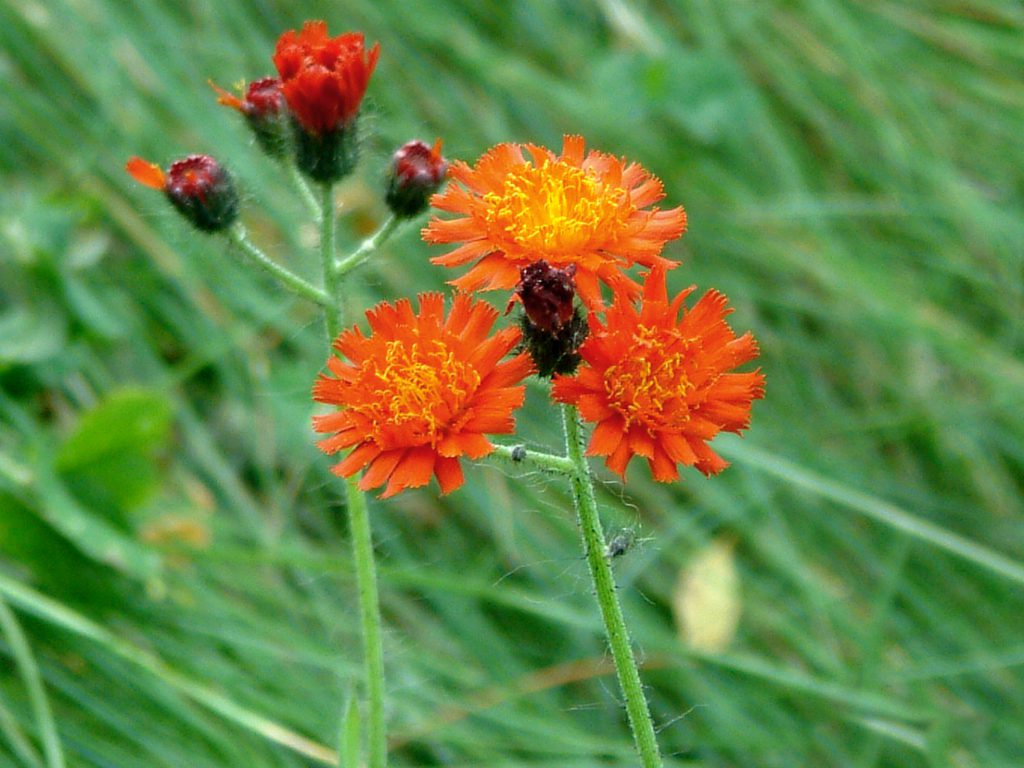Scientific names: Picris hieracioides and Hieracium sabaudum
What Is It?
Hawkweed is a perennial herb that produces large quantities of seeds and can hybridize with many other plant species, making it an aggressive competitor with native plants and desired crops. Invasive hawkweed includes a number of species introduced from Europe, which are fairly similar to the native hawkweed species found in Washington.
It Is Here Yet?
Yes. Many invasive hawkweed species have been documented in Washington, including common, European, meadow (yellow devil), mouseear, orange, polar, smooth, and yellow (king devil) hawkweeds.
Why Should I Care?
Hawkweed is an aggressive competitor of other pasture and range plant species. It spreads easily, making it hard to control and difficult for other plants to compete with. Hawkweed species are unpalatable, making it undesirable in pasture and rangelands.
How Can We Stop It?
Clean vehicles, boots, and animals that have passed through infested or potentially infested areas. Prevent spread on your property by monitoring for hawkweed, avoiding overgrazing, managing existing desired plants, and increasing shade by planting shrubs and trees. Many hawkweed varieties are on Washington’s Terrestrial Noxious Weed Seed and Plant Quarantine list, meaning it is prohibited to transport, buy, sell, offer for sale, or distribute those plants, plant parts, or seeds. Hawkweed species also are listed as Class B noxious weeds in Washington State.
To learn more, visit our “Don’t Pack a Pest” and “Play, Clean, Go” campaign pages.
What Are Its Characteristics?
- Hawkweed, in general, is a perennial herb with small, dandelion-like heads, borne singly at the top of long stems.
- The flowers are typically orange or yellow, may be flat-topped or rounded, and are typically compact. Invasive hawkweeds are similar in appearance, and may hybridize.
- Hawkweed has milky latex in its stems, leaves, and fibrous roots.
How Do I Distinguish It From Native Species?
Invasive hawkweeds may be difficult to distinguish from native hawkweeds, and also may be confused with dandelion. In general, the invasives tend to have few stem leaves that are greatly reduced in size and found mostly on the lower half of the stem. Guidance on distinguishing native and invasive hawkweeds may be found online.


